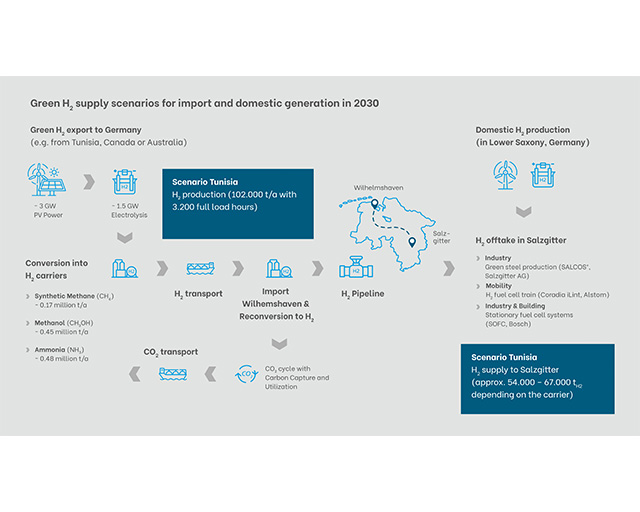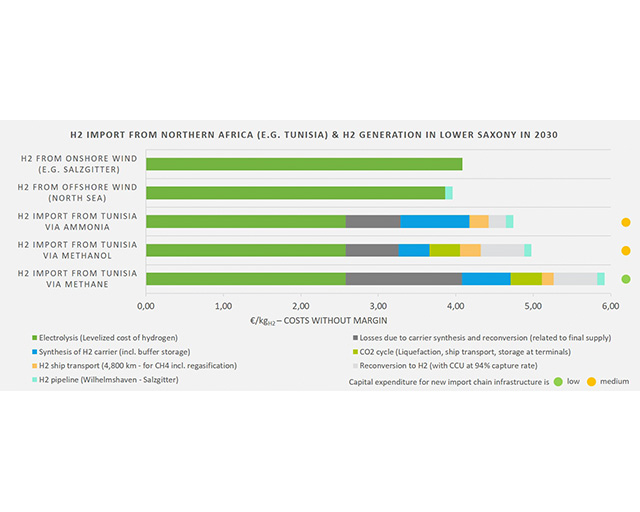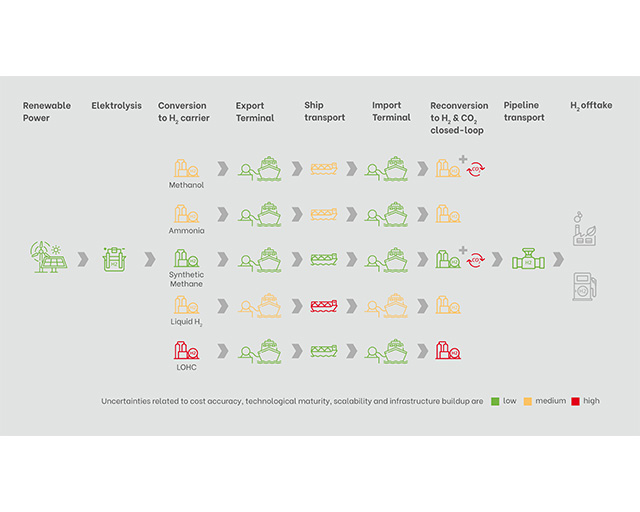
Short-term solutions for green hydrogen in Salzgitter

Germany and the EU increasingly require green hydrogen for the rapid decarbonization of industry. A marketable supply by 2030 can be achieved through a combination of national production and strategic imports by sea. The Wasserstoff Campus Salzgitter, which the Fraunhofer IST is supporting from a scientific perspective, is investigating the essential issues and providing answers regarding the necessary market launch.





Salzgitter as a model region for climate-neutral industry
The Wasserstoff Campus Salzgitter, at its industrially dominated location, is pursuing the goal of developing itself as a prominent model region for the successful transformation of industry and society to climate neutrality by addressing and driving forward the development of a hydrogen economy. On behalf of the Campus, experts from the Fraunhofer IST, in collaboration with MAN Energy Solutions SE, have published a thesis paper on the “GreenH2SZ” project which identifies possible solutions for supplying Salzgitter with green hydrogen in a timely and cost-efficient manner. The research results verify that Lower Saxony offers the best location conditions for the establishment of a competitive hydrogen economy.
Thesis: The production of green hydrogen in Germany is competitive
One statement in the thesis paper concerns the production costs of green hydrogen in Germany. Although it can fundamentally be produced much more cheaply in sunny countries than in Lower Saxony, it must, however, be converted for transportation to Germany and later converted back again. These processes, which involve costs and losses, force up the total expenditure and exceed the costs for production and transport within Northern Germany. The investigations conducted by the team of experts revealed that hydrogen generated with wind power and transported by pipeline to Salzgitter remains more cost-effective in comparison.
One example: The production costs of green hydrogen from Northern Germany are predicted to be around 4 €/kg H2 in 2030. In the thesis paper, a comparison with imported hydrogen from Tunisia is provided (see adjacent middle Figure): The costs for hydrogen imported via the so-called ammonia route, i.e. bound in ammonia for transport and subsequently converted back (see lower Fig.), are calculated at approx. 4.70 €/kg H2. Accordingly, green hydrogen from Northern Germany would be competitive with imports and could form the foundation stone for a sufficient supply. The experts therefore urge for investments in large-scale electrolysis plants and renewable energy production in Germany to be expedited in parallel to imports.
Regional hydrogen production and infrastructure for hydrogen imports necessary
In summary, the authors of the thesis paper conclude that Lower Saxony as a whole offers excellent conditions for initiating and accelerating the market launch of the hydrogen economy for the energy revolution. This applies both to the necessary domestic generation at competitive production costs of approx. 4€/kg H2 and to the realization of timely imports of green hydrogen via the gas import terminals being built at the North Sea. This corroborates their thesis that Lower Saxony will form the nucleus of the German hydrogen-pipeline network in order to be able to supply industrial sites such as Salzgitter.